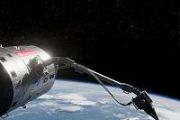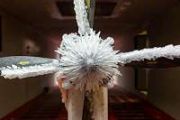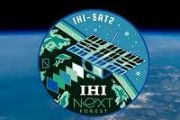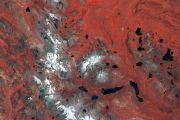
Copernical Team
China's space program eyes peaceful cooperation
 A recent report by US magazine The National Interest demonized China's achievements in space by interpreting China's space exploration missions, including the lunar program and manned spaceflight, as "threats to US leadership in space" and a "detriment to US national security."
This report is just the tip of iceberg in the US' sustained attempts to suppress and discredit China's space prog
A recent report by US magazine The National Interest demonized China's achievements in space by interpreting China's space exploration missions, including the lunar program and manned spaceflight, as "threats to US leadership in space" and a "detriment to US national security."
This report is just the tip of iceberg in the US' sustained attempts to suppress and discredit China's space prog New method can improve explosion detection
 Computers can be trained to better detect distant nuclear detonations, chemical blasts and volcano eruptions by learning from artificial explosion signals, according to a new method devised by a University of Alaska Fairbanks scientist.
The work, led by UAF Geophysical Institute postdoctoral researcher Alex Witsil, was published recently in the journal Geophysical Research Letters.
W
Computers can be trained to better detect distant nuclear detonations, chemical blasts and volcano eruptions by learning from artificial explosion signals, according to a new method devised by a University of Alaska Fairbanks scientist.
The work, led by UAF Geophysical Institute postdoctoral researcher Alex Witsil, was published recently in the journal Geophysical Research Letters.
W Canada's military creates new space division
 The Royal Canadian Air Force (RCAF) has established the 3 Canadian Space Division as its newest addition to the country's military, the Department of National Defense said in a statement on Friday.
"Today, Lieutenant-General Al Meinzinger, Commander of the Royal Canadian Air Force (RCAF), and Brigadier-General Mike Adamson, Commander of 3 Canadian Space Divis
The Royal Canadian Air Force (RCAF) has established the 3 Canadian Space Division as its newest addition to the country's military, the Department of National Defense said in a statement on Friday.
"Today, Lieutenant-General Al Meinzinger, Commander of the Royal Canadian Air Force (RCAF), and Brigadier-General Mike Adamson, Commander of 3 Canadian Space Divis Building the infrastructure for Advanced Air Mobility
 Small drones delivering packages, air taxis carrying passengers, or air ambulance providing lifesaving transportation - these are just some of the concepts NASA's Advanced Air Mobility (AAM) mission is helping get into our skies. For these aircraft to safely operate, cities, suburbs, and rural areas will need new or enhanced infrastructure.
Imagine a network of routes where new aircraft wo
Small drones delivering packages, air taxis carrying passengers, or air ambulance providing lifesaving transportation - these are just some of the concepts NASA's Advanced Air Mobility (AAM) mission is helping get into our skies. For these aircraft to safely operate, cities, suburbs, and rural areas will need new or enhanced infrastructure.
Imagine a network of routes where new aircraft wo Smaller, stronger magnets could improve fusion devices
 Researchers at the U.S. Department of Energy's (DOE) Princeton Plasma Physics Laboratory (PPPL) have found a way to build powerful magnets smaller than before, aiding the design and construction of machines that could help the world harness the power of the sun to create electricity without producing greenhouse gases that contribute to climate change.
The scientists found a way to build hi
Researchers at the U.S. Department of Energy's (DOE) Princeton Plasma Physics Laboratory (PPPL) have found a way to build powerful magnets smaller than before, aiding the design and construction of machines that could help the world harness the power of the sun to create electricity without producing greenhouse gases that contribute to climate change.
The scientists found a way to build hi Satellite operators Eutelsat, OneWeb agree to merge
 French and British satellite operators Eutelsat and OneWeb announced Tuesday plans to merge and create a "global champion" in broadband internet, rivalling US giants such as Elon Musk's Starlink.
Eutelsat and OneWeb said in a joint statement that they have signed a memorandum of understanding to join forces to become "a leading global player in connectivity... in an all-share transaction."
French and British satellite operators Eutelsat and OneWeb announced Tuesday plans to merge and create a "global champion" in broadband internet, rivalling US giants such as Elon Musk's Starlink.
Eutelsat and OneWeb said in a joint statement that they have signed a memorandum of understanding to join forces to become "a leading global player in connectivity... in an all-share transaction." Making Muons for Scientific Discovery, National Security
 The Defense Department and other federal agencies have sought advanced sources that generate gamma rays, X-rays, neutrons, protons, and electrons to enable a variety of scientific, commercial, and defense applications - from medical diagnostics, to scans of cargo containers for dangerous materials, to non-destructive testing of aircraft and their parts to see internal defects. But none of these
The Defense Department and other federal agencies have sought advanced sources that generate gamma rays, X-rays, neutrons, protons, and electrons to enable a variety of scientific, commercial, and defense applications - from medical diagnostics, to scans of cargo containers for dangerous materials, to non-destructive testing of aircraft and their parts to see internal defects. But none of these UCLA scientists discover places on the moon where it's always 'sweater weather'
 Future human explorers on the moon might have 99 problems but staying warm or cool won't be one. A team led by planetary scientists at UCLA has discovered shady locations within pits on the moon that always hover around a comfortable 63 degrees Fahrenheit.
The pits, and caves to which they may lead, would make safer, more thermally stable base camps for lunar exploration and long-term habi
Future human explorers on the moon might have 99 problems but staying warm or cool won't be one. A team led by planetary scientists at UCLA has discovered shady locations within pits on the moon that always hover around a comfortable 63 degrees Fahrenheit.
The pits, and caves to which they may lead, would make safer, more thermally stable base camps for lunar exploration and long-term habi EarthCARE taking wing
 Image:
EarthCARE taking wing
Image:
EarthCARE taking wing Buzz Aldrin's Apollo 11 jacket sold for $2.7 mn
 The jacket worn by US astronaut Buzz Aldrin during his 1969 flight to the Moon aboard Apollo 11 was sold at auction for $2.7 million in New York Tuesday, Sotheby's announced.
The white jacket, adorned with an American flag, NASA's initials, a patch for the Apollo 11 mission and the name "E. ALDRIN," is part of a personal collection of items the 92-year-old astronaut decided to put up for sal
The jacket worn by US astronaut Buzz Aldrin during his 1969 flight to the Moon aboard Apollo 11 was sold at auction for $2.7 million in New York Tuesday, Sotheby's announced.
The white jacket, adorned with an American flag, NASA's initials, a patch for the Apollo 11 mission and the name "E. ALDRIN," is part of a personal collection of items the 92-year-old astronaut decided to put up for sal 






























